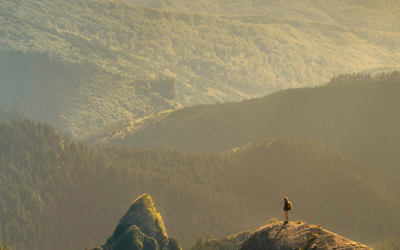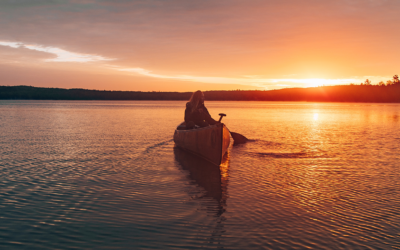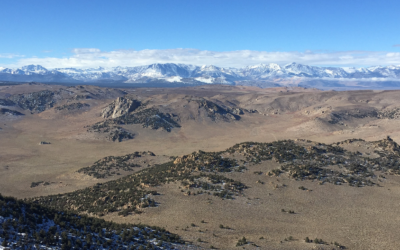Rock arch over pond in Haines Falls, New York. Photo credit Todd Torabi on Unsplash
Crises of Use
Editorial Perspectives
December 2021 | Volume 27, Number 3
The substantial increase in the recreational use of natural resources during this global pandemic has been well documented. National parks, cultural heritage sites, and wilderness areas globally are all recording levels of visitation at a scale never previously experienced. For example, Yellowstone National Park recorded 921,844 recreation visits in August 2021, the largest August visitation on record. Further, the park has welcomed 3,590,904 visits through August 2021, representing a 40% increase from the same period last year. At Rocky Mountain National Park, a timed entry permit system was implemented from May through October 2021. Visitors are required to obtain a timed entry permit to be allowed access into the park between the hours of 5 a.m. and 6 p.m. daily. In the Galápagos, increases in cruise travel, guided tours, and land activities have created greater impacts on the important ecological resources. And at the Machu Picchu UNESCO site, managers are grappling with overcrowding, waste disposal, and sanitation issues. Officials of the World Heritage Committee have had to consider whether to add Machu Picchu to the list of World Heritage in Danger.
Is it appropriate and important to recognize that use levels in protected areas have reached a state of crisis? Have individual day visits and tourism reached a level that is beyond social and resource capacities and thus unsustainable? And is this happening at a global scale, representative of the global protected area systems and not simply unique case studies or circumstances?
I certainly recognize the implications that come with calling a situation a crisis. Such a call must be done responsibly to initiate social and political movements. It requires mobilization, investment, education, and collaborative leadership. I also have stated previously that increased demand during the global pandemic has created a great opportunity to engage new constituencies and partners in protection and management. I still believe that is true. I also believe that a holistic view of use and access is critical if our community is going to continue to expand efforts that address the vital issues of diversity, equity, and inclusion across protected area systems.
Regardless of whether our parks, wilderness areas, and heritage sites are experiencing a crisis of use, a guided strategy is needed. As we transition to a post-pandemic society, demand for transformational, restorative, and education experiences in nature will not recede. Nature has demonstrated its diverse benefits to a greater constituency these past months, and we as advocates, scientists, and managers need to embrace the challenge that comes with a larger audience. But that means we must acknowledge we have demand like never before, and that it will take dedicated resources to develop, test, and implement adaptive strategies that manage this demand while still protecting the integrity and quality of our important natural resources. This crisis is an opportunity, but only if we embrace it and have the commitment and courage to act now.
In this issue of IJW, David Cole, Stephen McCool, and David Lime pay tribute to George Stankey. Thomas Lang and Bill Borrie examines wilderness solitude in the 21st century. Mark Anderson provides a synthesis of recent findings on carbon storage in old growth forests. And Rosemary Evans discusses prescribed burning as moorland management in Britain.
ROBERT DVORAK is editor in chief of IJW and professor in the Department of Recreation, Parks, and Leisure Services Administration at Central Michigan University: email: dvora1rg@cmich.edu
Read Next
December 2021
In this issue of IJW, we remember George Stankey and his contributions to wilderness research and stewardship. Mark Anderson provides a synthesis of recent findings on carbon storage in old growth forests. Rosemary Evans examines prescribed burning in Britain’s moorlands. And Tobias Nickel presents a call for a standard definition of “Natural” in wilderness stewardship.
George Stankey: Mentor, Colleague, Friend
George Stankey was a critical thinker who saw the big picture and could work across disciplinary boundaries.
A Plea for a Standard Definition of “Natural” in Wilderness Stewardship
We face the challenge of applying more nuance and thought to the term ‘natural,’ the meaning of which most of us previously took for granted



